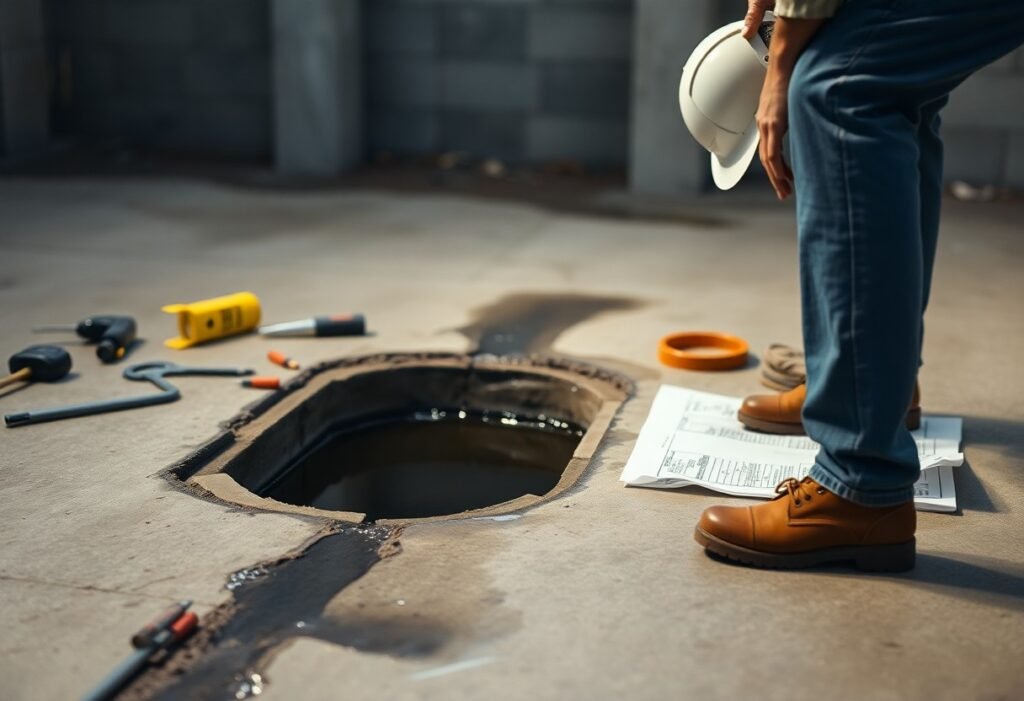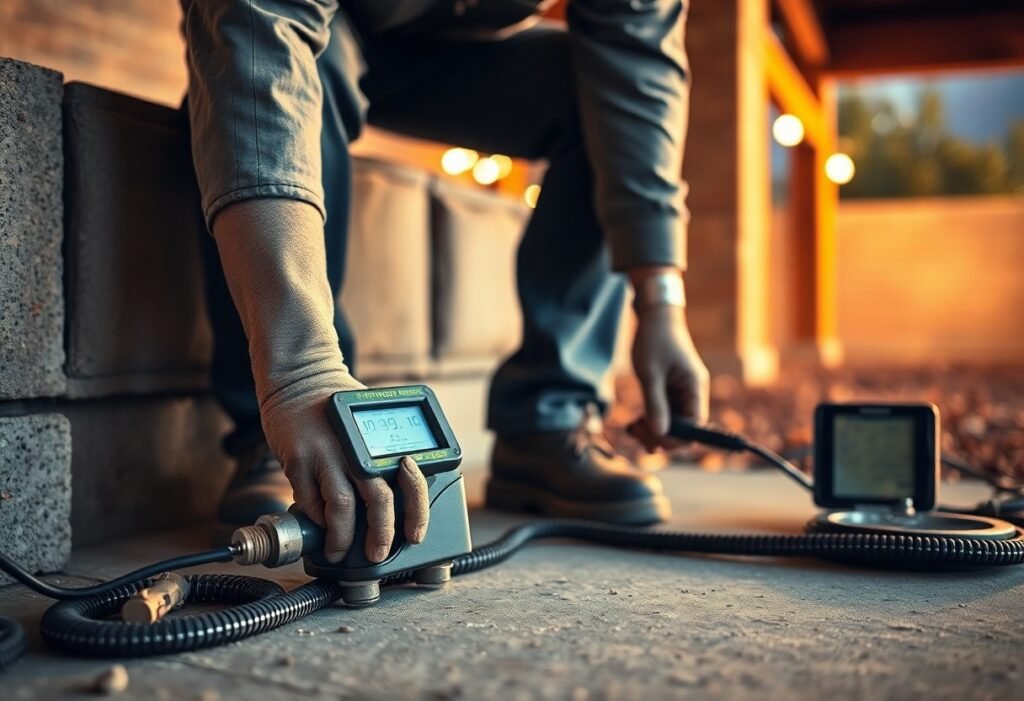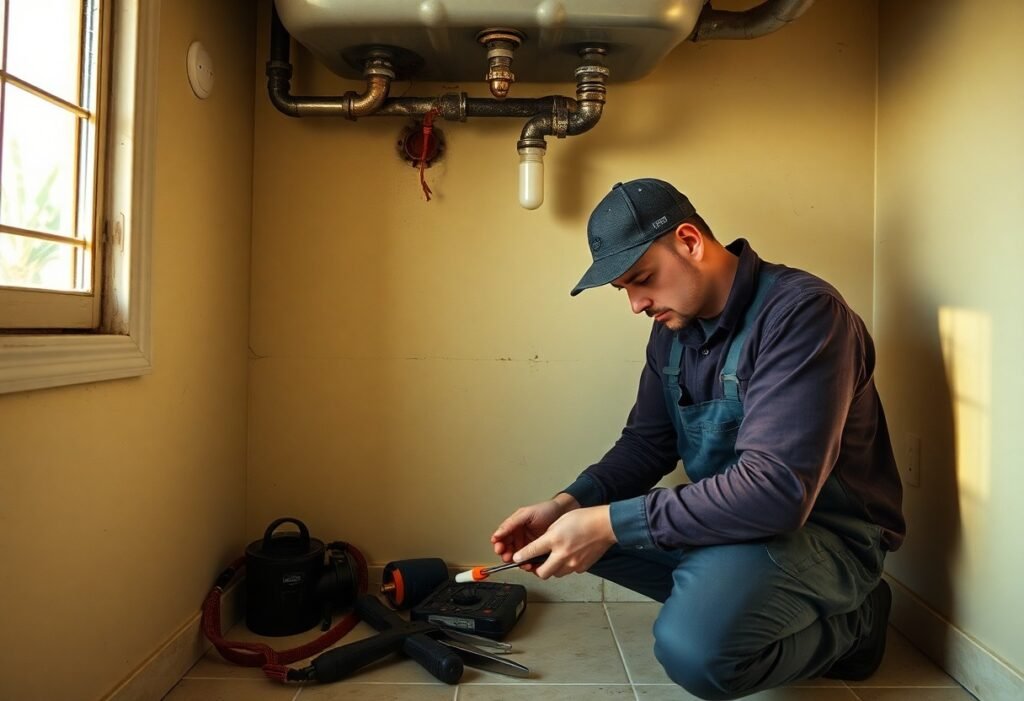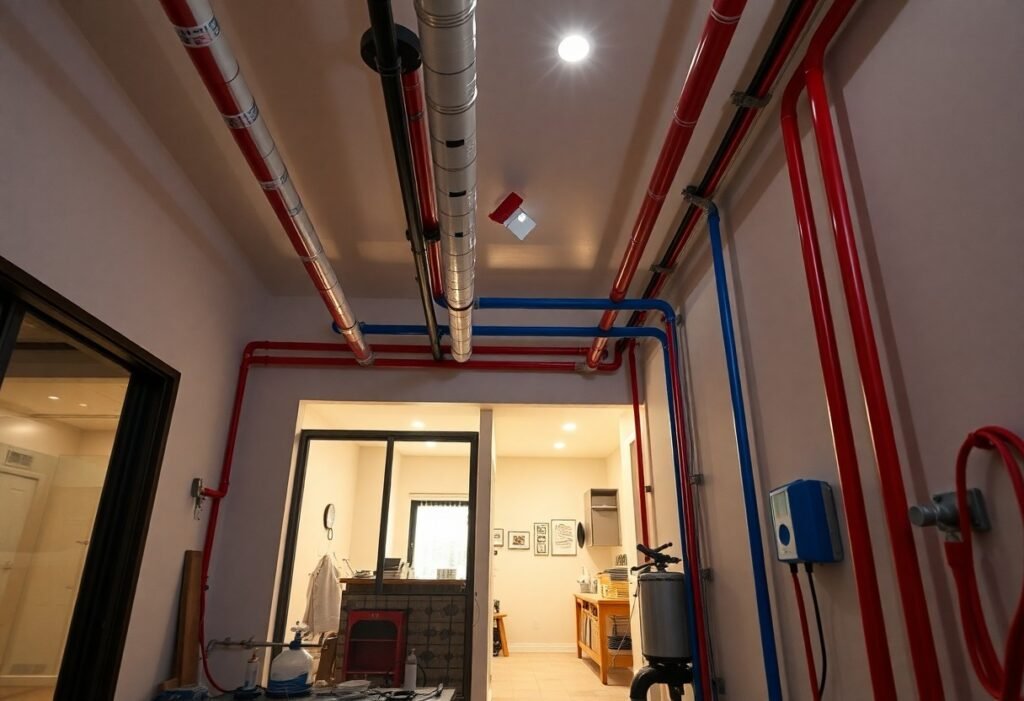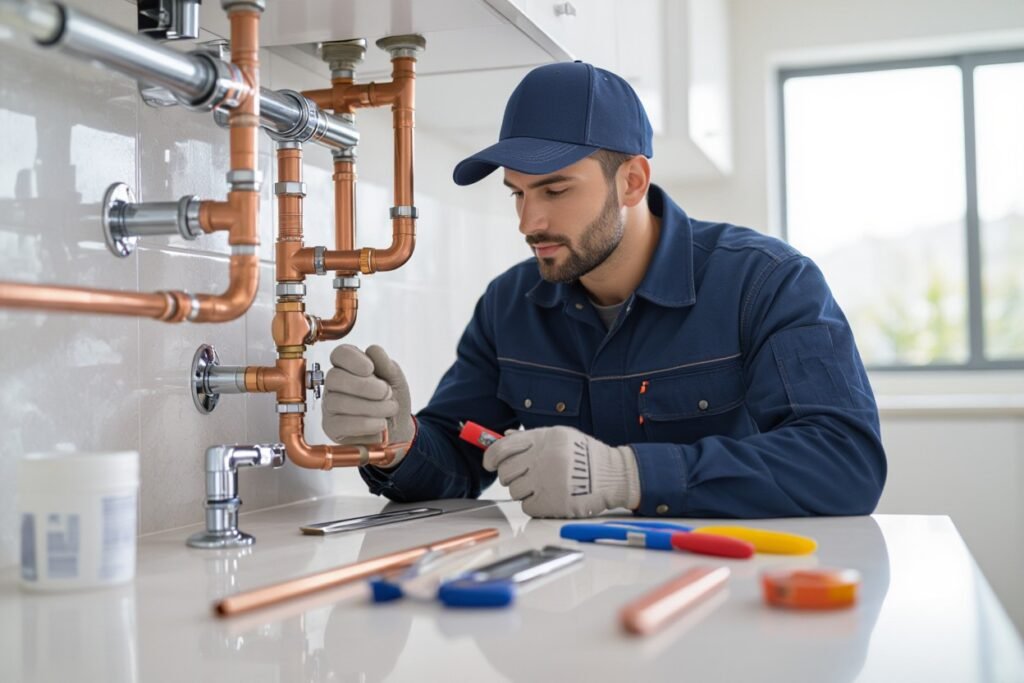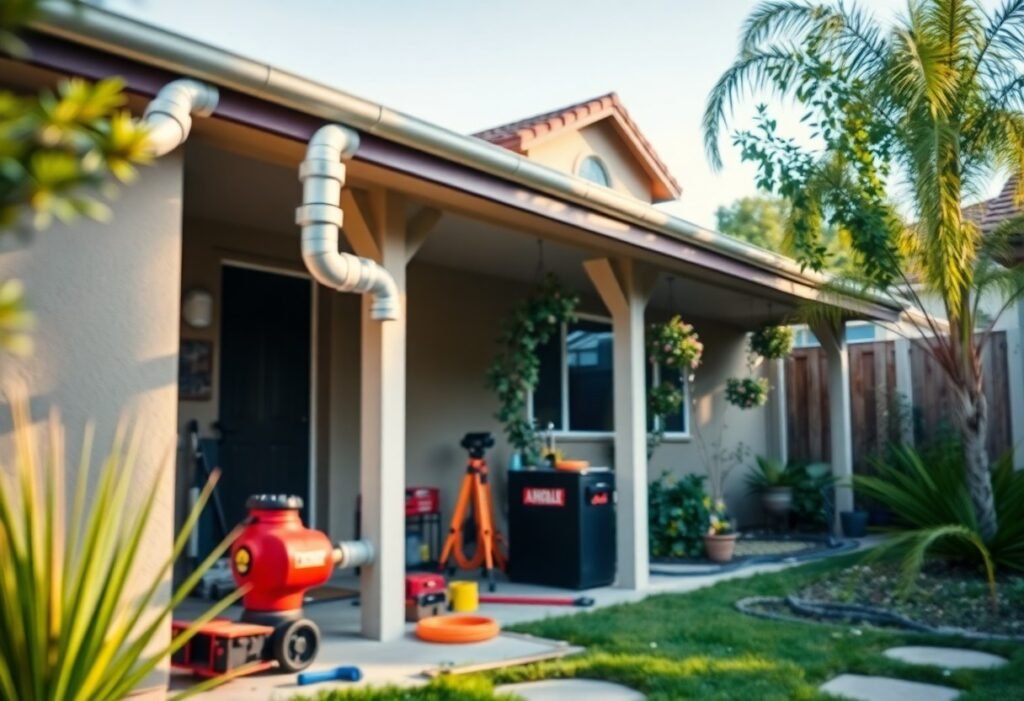Tustin, California – Signs Your Pipes Need a Whole House Repipe
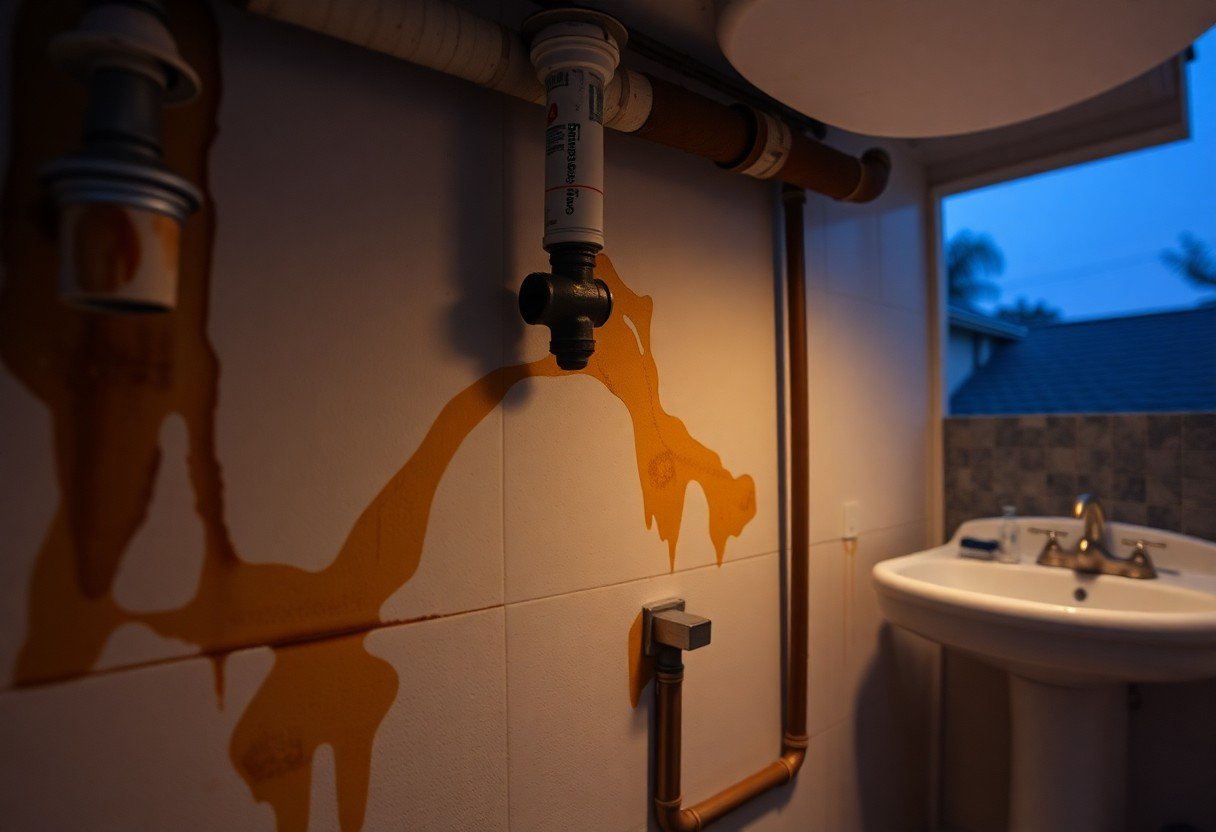
Many homeowners in Tustin, California, face plumbing issues that can significantly affect their daily lives. Understanding the signs that indicate your pipes require a whole house repipe is vital to maintaining a safe and efficient plumbing system. From persistent leaks and low water pressure to discolored water and unusual noises, these warning signs can lead to more severe problems if not addressed. Recognizing them early can save you from costly repairs and ensure your home remains a comfortable haven.
Key Takeaways:
- Frequent leaks and water damage may indicate the need for a whole house repipe, as older pipes can deteriorate over time.
- The presence of low water pressure can signal corrosion or buildup in the plumbing system, suggesting a potential repipe is necessary.
- Discolored or rusty water can be a sign of pipe degradation, and homeowners in Tustin should consider a repipe to ensure safe, clean water supply.
Decoding Common Pipe Symptoms
Understanding the signs of failing pipes can save you from extensive damage and costly repairs. Being aware of the symptoms like leaks, low water pressure, and discolored water can help you take prompt action. By keeping an eye out for these telltale signs, you can determine when it’s time to consider a whole house repipe to safeguard your home.
Persistent Leaks: A Red Flag
Continual leaks in your plumbing system should raise immediate concerns about pipe integrity. Even small leaks can escalate over time, leading to significant water damage and mold growth. If you find that you’re frequently repairing leaks, it could indicate that your pipes are reaching the end of their lifespan, suggesting the need for a whole house repipe.
Discolored Water: What It Reveals
Water that appears rusty or brown is a clear warning sign that your plumbing may be deteriorating. Discoloration often indicates the presence of sediment, rust, or corrosion within your pipes, all of which can affect water quality. This could signal that pipes are not only aging but may also pose a health risk and require immediate attention.
Specifically, discolored water can arise from aged galvanized steel or iron pipes, which are prone to rust. In areas like Tustin, where homes often have older plumbing systems, it’s not uncommon for homeowners to experience this issue. If you notice discoloration, it’s wise to contact a plumbing professional who can assess the situation and determine whether you need a full repipe to ensure safe, clean water flow in your home.
The Economic Impact of Pipe Failure
Pipe failure can lead to severe financial burdens for homeowners in Tustin. Stagnant water buildup can result in mold growth and structural damage, leading to costly repairs that can easily reach thousands of dollars. Furthermore, utility bills often spike due to leaks, adding unexpected expenses to your monthly budget. Investing in a quality repipe now can mitigate future economic strain, making it a wise choice for your finances. For expert assistance, check out Repipe Specialists In Orange County.
Analyzing Homeowner Expenses
Addressing pipe failures can be more than a minor inconvenience. Homeowners often face increased expenses due to emergency repairs, higher water bills, and potential health costs from mold exposure. Each leaky pipe has the potential to escalate expenses significantly, impacting your overall financial health in both the short and long run.
Long-Term Value of Proactive Repipe
Choosing to proactively repipe your home provides significant long-term savings. By addressing pipe integrity before issues arise, you not only enhance your property value but also protect against unexpected and costly damages. In the long run, a single investment in repiping can yield peace of mind and stability in your household finances.
Prioritizing proactive repipe measures means you’re securing the longevity of your plumbing system, reducing the likelihood of emergency repairs. Home values can increase with updated plumbing, making your investment worthwhile if you ever decide to sell. You also minimize the risk of water-related emergencies, leaving you with more time and resources to enjoy your home instead of worrying about potential plumbing catastrophes.
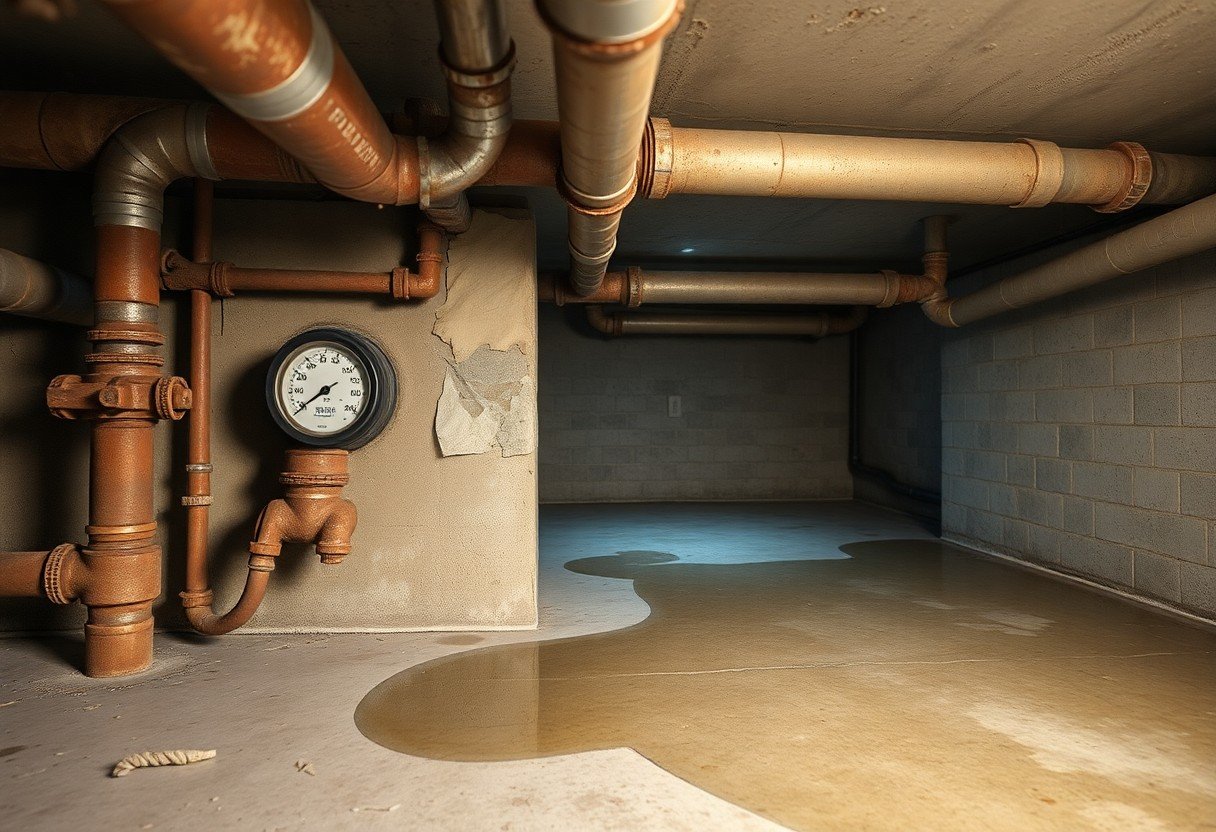
The Science of Pipe Deterioration
Understanding the science behind pipe deterioration can enable you to anticipate potential failures before they become significant issues. Factors such as material composition, environmental influences, and water conditions all play a pivotal role in the life expectancy of your plumbing system. Recognizing how these elements interact helps in identifying when your system may require a whole house repipe, ensuring that you maintain a safe and efficient water supply.
Understanding Corrosion and Decay
Corrosion occurs when your pipes are exposed to water and air, leading to rust and decay over time. For materials like iron and copper, this process increases the risk of leaks and can release harmful substances into your drinking water. Frequent plumbing repairs often highlight the presence of corrosion, suggesting that your pipes are now less reliable and may need replacement to safeguard your home.
The Role of Water Quality in Pipe Lifespan
Your water quality significantly impacts the lifespan of your pipes. High levels of minerals and chlorine can accelerate corrosion, while low pH levels can lead to greater chemical attacks on your plumbing system. These factors not only shorten the lifespan of your pipes but can also contribute to poor water quality, requiring more frequent maintenance and costly interventions.
Specific minerals, such as calcium and magnesium, contribute to hard water, which can create scale buildup inside your pipes. Over time, this build-up narrows the pipe diameter, reducing water flow and increasing pressure on the pipe walls, resulting in leaks. Similarly, if your water supply comes from a source with a high acidity level, you’re at an increased risk of pipe deterioration. Conducting regular water quality tests can help you identify these issues early, allowing you to take preventative measures before your plumbing reaches a critical failure point.
Timing Your Repiping: When is Too Late?
Delaying a whole house repipe can lead to increasingly dire consequences. Once you notice signs such as frequent leaks, discolored water, or reduced water pressure, it’s time to take action. Every instance of pipe failure not only disrupts your daily life but can also escalate into larger problems and significantly higher repair costs. If your pipes are over 50 years old, they’re at a heightened risk of failure, and remedial measures may not suffice.
Warning Signs Before Catastrophe
Look for warning signs such as rusty or discolored water, increased water bills, or mold growth in your home. These indicators often signal underlying plumbing issues that, if left unaddressed, could lead to catastrophic pipe failure. Addressing these concerns immediately can help prevent extensive damage.
Expert Insights on Optimal Timing
According to plumbing experts, the best time to consider repiping is before you find yourself dealing with severe plumbing failures. Regular inspections, especially for older homes, can help pinpoint potential issues. Typically, homes built with galvanized steel pipes are prime candidates for repiping and should be evaluated after 25 to 40 years, depending on local water quality and soil conditions.
Homeowners in Tustin should be proactive when it comes to the timing of repiping. If your property has older piping materials or you’ve experienced constant plumbing problems, seek a qualified plumber’s opinion. They can assess the condition of your pipes, and give you relevant data such as average repair costs in your neighborhood. Knowing when to repipe not only saves you from an emergency but also helps maintain the value of your home. Having a well-timed repipe can save you time, money, and stress in the long run.
Navigating the Repipe Process
Preparation and understanding of the repiping process can significantly reduce the stress associated with this necessary home improvement. You must consider various factors such as the timing, materials, and hiring the right professionals to ensure a smooth transition. Planning ahead allows you to avoid additional problems and keep your plumbing system running efficiently.
Selecting the Right Materials
Choosing the proper materials for your repipe is vital for long-lasting performance. Options such as copper, PVC, and PEX each offer unique benefits. Copper is durable and resistant to corrosion, while PEX is flexible and easier to install. Assessing your priorities, like cost and longevity, helps determine the best fit for your home.
Choosing the Right Professionals
Finding experienced professionals is vital to ensure your repiping project is executed correctly. Certified plumbers should have a solid track record and provide references to demonstrate their reliability. Asking friends or family for recommendations can lead to trustworthy options. Verify credentials and read online reviews to gain insights into the quality of work providers offer.
Choosing the right professionals goes beyond just hiring a contractor. Look for those who specialize in repiping and have experience with the materials you select. Reviewing their past projects can help you gauge their proficiency. Clear communication with your chosen plumber about your expectations will foster a collaborative spirit throughout the process. Don’t hesitate to ask questions; a reputable professional will be willing to explain their methods while addressing your concerns.
To wrap up
With these considerations, you can effectively assess the condition of your plumbing in Tustin, California. Signs like frequent leaks, discolored water, or low water pressure indicate that a whole house repipe may be necessary. By staying vigilant and recognizing these warning signs, you can ensure the safety and efficiency of your home’s plumbing system, leading to better water quality and peace of mind for you and your family.
FAQ
Q: What are the common signs that indicate my pipes need a whole house repipe in Tustin, California?
A: There are several indicators that may suggest your plumbing system requires a full repipe. Look for persistent leaks, which can manifest as water stains on ceilings and walls or pooled water in various areas of your home. Additionally, if you notice low water pressure or if the water from your taps has a rusty or discolored appearance, these may be signals of pipe corrosion. Frequent clogs and the presence of strange noises from your plumbing could also point to underlying issues that might necessitate a complete repipe.
Q: How does the age of my plumbing system affect the need for a repipe in Tustin?
A: The age of your plumbing plays a significant role in determining the need for a repipe. Many older homes in Tustin may still have original plumbing that was installed with materials like galvanized steel or copper, which can deteriorate over time. If your plumbing system is over 40 years old, it may be more susceptible to leaks, corrosion, and mineral buildup. Therefore, if you live in an older home and are experiencing plumbing issues, it might be wise to consult with a professional to assess whether a whole house repipe is necessary.
Q: What factors should influence my decision to invest in a whole house repipe in Tustin, California?
A: When considering a repipe, several factors should influence your decision. First, evaluate the frequency and severity of plumbing issues you encounter—if repairs are becoming routine, a repipe may be more cost-effective in the long run. Next, assess the material of your existing pipes; for instance, older materials like polybutylene are more prone to failure and should be replaced. Additionally, consider your home’s overall condition and whether investing in new plumbing aligns with your long-term home improvement plans. It’s often beneficial to consult with a plumbing expert in Tustin to thoroughly understand your specific situation and obtain tailored advice.

